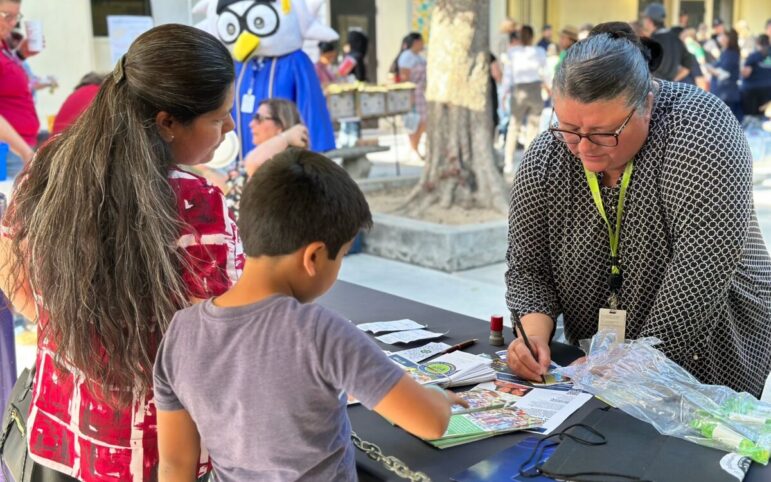How to solve a $4 billion revenue shortfall for TK-12 and community colleges remains on the table as the Legislature prepares to head into extra innings in negotiations with the governor over the 2023-24 state budget.
Legislative leaders settled on a compromise plan for the budget Sunday night and will ask members of the Senate and Assembly to pass their proposal for a $312 billion state general fund on Thursday to meet a constitutional deadline.
That will then buy two weeks to work out the remaining details with Newsom on education and other, bigger disagreements, like a $3 billion transit bailout. The full budget proposal can be found in identical bills, Assembly Bill 101 and Senate Bill 101; one version will eventually go to Newsom. A useful summary prepared by the Senate can be found here.
In May, Newsom built his $106.8 billion revised budget for community colleges and schools on the assumption that an erosion of revenue would force cuts of about $4 billion from what he initially proposed in January for Proposition 98. That’s the formula that determines how much of the general fund must go to schools and community colleges.
In their budget alternative, the Legislature agrees with Newsom to leave his top priorities intact: funding for the Local Control Funding Formula, which covers school districts’ basic expenses and equity opportunities; an 8.3% cost of living increase, as determined by a federal formula; ongoing $1.5 billion for universal school lunches.
They also agreed to retain most of the record one-time spending passed the year before, which included billions for community schools, expanded after-school, and summer school for low-income students.
They also didn’t touch $80 million more annually for county offices of education that operate county juvenile court schools and an additional $300 million Newsom proposes for the funding formula for an “equity multiplier.” It would address learning needs and spending accountability in the highest-poverty schools.
Where they disagree is how to find the remaining $4 billion. Newsom proposed to take back money from two one-time block grants included in the 2022-23 budget: $2.5 billion from a $7.9 billion learning recovery block grant and $1.8 billion — about half — of the Arts, Music, and Instructional Materials Block Grant, which districts can use for other purposes; some plan to use it to cover a big increase in districts’ rising share of employee pensions through CalSTRS and CalPERS.

Organizations representing school administrators and school boards argued that many districts had already spent or committed the block-grant funding at the same time they are facing fiscal challenges from declining enrollments. Newsom’s advisers at the Department of Finance countered they were proposing to take back a third of the money for one-time funding intending to be used over three years. They also said that many districts have not used billions of related federal Covid relief and learning recovery dollars that expire in the fall of 2024.
In their proposal, legislative leaders would cut $200 million instead of $1.8 billion from the arts block grant and $494 million instead of $2.5 billion from the learning recovery block grant.
Legislative leaders would make up half of the $3.5 billion difference through higher revenues, not cuts. The nonpartisan Legislative Analyst’s Office overall is more pessimistic than Newsom about the state’s revenue outlook. And it frowns on the governor’s plan to use one-time cuts to fund an ongoing, high cost of living adjustment. But it did project one source of higher revenue that the Legislature has seized on: $2 billion in higher property tax receipts than the Department of Finance estimated. Property taxes and state taxes together fund Proposition 98, and, depending on the year, higher property taxes can raise the Proposition 98 guarantee without raising the share of state revenue; 2023-24 would be one of those years.
“The Legislature is trying to be creative about how to minimize pain in store for schools,” said Kevin Gordon, president of Capitol Advisors Group, an education consulting company based in Sacramento.
“There is always the inclination to take the most optimistic view on expenses and revenues. So the Legislature is reasoning, why make cuts they don’t have to make based on reasonable estimates?”
The Legislature would make up additional revenue by delaying some funding approved last year, including pushing back $1 billion for energy-saving school buses and delaying $400 million of $500 million for the Golden State Pathways. The latter would be a new program that would promote career opportunities for low-income high school students in high-skill, high-wage areas, including technology, education and health. It would combine dual enrollment in college courses, completion of A-G courses required for admission to UC and CSU, and workplace apprenticeships.
Golden State Pathways has the support of a number of school districts and advocacy organizations like the Linked Learning Alliance, who are lobbying hard for it. Legislative leaders argue that the grants applications for the money haven’t been written yet, and much of the funding couldn’t be spent next year anyway. But the pathways program is a priority of the governor, so the issue remains on the table, those involved in the budget talks say.
Also on the table:
Campus housing: Newsom had proposed delaying funding for the California Student Housing Revolving Loan Fund; the Legislature disagrees and would fund $300 million per year for six years. It would provide zero-interest loans to qualifying UC, CSU and community college campuses to build affordable student, faculty, and staff housing.
Child care: The Legislature and Newsom remain at odds on how much to reimburse beleaguered child-care providers, many of whom barely stayed open during the pandemic at pay levels pegged to 2016 costs. The Legislature has proposed roughly a 25% raise in the reimbursement rate to centers to care for low-income families; Newsom is proposing to extend only the 8.2% cost-of-living adjustment to the centers.
Along with waiving child care fees through September, which Newsom proposed, the Legislature’s proposal would permanently cap family fees at 1% of family income and waive family fees for families with income under 75% of state median income, The proposal did not cite cost estimates.
